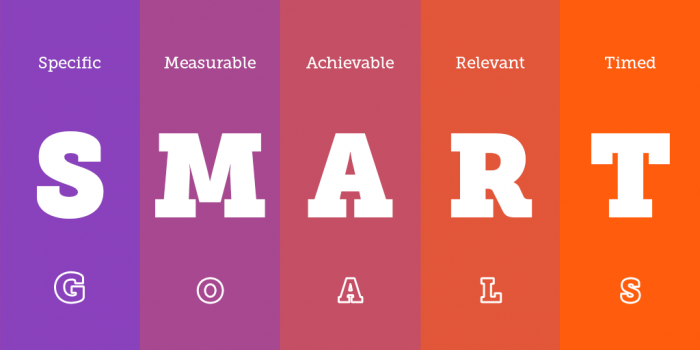Whether you’re a project manager working with a new team, or a team manager preparing for the new year or quarter – you must have an action plan. It gives you motivation to get things done as efficiently as possible. An action plan is your “plan of attack” so to speak. It is made up of daily tasks, organized on a weekly basis, with a greater agenda – to help you achieve quarterly or yearly goals.
An action plan is a detailed overview of the initiatives and actions you plan to take in order to achieve a specific goal, or complete a project.
We’re going to dive into the crucial information you need in your action plan. Once you comprehend the value in each of the following points – you’re ready to start working with your team.
So what makes an action plan effective?
An effective action plan includes the following elements:
- SMART goals
- Initiatives
- Expected timeline
- Planned working quarter
- Week by week individual plans
- List of responsible team members
- Priority level indicators for specific tasks
- Effort level indicators for specific tasks
- Space for communicating ideas
- Designated place for sharing important documents
Don’t worry about the organization of these things – we’ve created that for you! Our action plan template includes all of the above elements, ensuring that you’ll have all the necessary information you need in front of you.
Used within teams, our free action plan template helps to hold you accountable and more importantly, getting you closer to your shared goals!
10 crucial elements your action plan template needs:
1. SMART goals

A good way to determine whether or not your goal is SMART is to use our SMART goals worksheet, this breaks down the questions you need to answer in order to get to the nitty gritty “good stuff”.
Examples of SMART goals:
Increase overall search engine traffic by 10% within 2 months
Improve the quality of our data from X landing page by increasing traffic from 200 users to 1000 users in Quarter 4
Test messaging on 4 segments and agree upon a unified message by the end of the Quarter 3.
2. Initiatives
SMART goals are nothing without agreeing upon and setting initiatives.
Initiatives are the larger projects you and your team decide to work on over a designated period of time that help bring you closer to those values you set out for yourself in your goals.
Let’s work with the following goal:
To improve the quality of data from X landing page by increasing traffic from 200 to 1000 users in Quarter 4
You need to question HOW your team can do that. What bigger projects will you agree on together and work to accomplish during the coming weeks?
You should strive to be SMART with these initiatives too. It’s important that you can evaluate your success and understand when to move onto the next project or initiative.
Some initiatives for this example could be:
Publish 5 quality content guest posts with links to X landing page on relevant sources
Schedule 4 social media posts (LinkedIn, Facebook, Twitter) each month to increase engagement levels from 30 likes to 60 likes
Review paid ads history of competitors and create 2 A/B test campaigns to run for the quarter
As you can see, these initiatives are bigger projects that can’t be effectively completed in just one week by one person. These are team level projects that need smaller tasks beneath them. We recommend 1-3 initiatives per goal depending on your working timeline.
3. Start and end dates
Each initiative has a start date and completion date. This is helpful especially if you’re working on multiple goals and managing a bunch of projects during a year. This helps you to organize your plan, and stay on course. Not only this, but you can see how your plan lived up to your expectations and what you can improve for the upcoming season, quarter, or year.
4. Planned working quarter
Whether you plan your year at once, or on a quarterly basis – you should always note which quarter you and your team are working on a specific goal and initiative. Similar to the reasoning behind start and end dates, it helps you understand the resources used at a specific time. Maybe you need to check back for accounting purposes at the end of a fiscal year. Which quarter did you spend the most time and resources on? By keeping track of these dates, you’ll be able to search more effectively when the time comes.
5. Week by week individual plans
We’ve discussed the need for SMART goals and initiatives…but we haven’t touched on the day to day, week to week individual tasks. If we’re working based on the goal and initiative from above – we need to think of what daily plans each team member needs to do that is related to driving those things forward.
To improve the quality of data from X landing page by increasing traffic from 200 to 1000 users in Quarter 4
Publish 5 quality content guest posts with links to X landing page on relevant sources
Schedule 4 social media posts (LinkedIn, Facebook, Twitter) each month to increase engagement levels from 30 likes to 60 likes
Review paid ads history of competitors and create 2 A/B test campaigns to run for the quarter
Team members are now clear on the assignment for Quarter 4 based on the above goal and initiatives. So, what plans will each team member make in order to get one step closer to checking those things off the list?
Plans should be specific and understandable for someone from an outside perspective to understand, some examples of suitable weekly plans would be:
- Reach out to 10 blog publishers about guest post opportunities
- Create a Canva infographic for this week’s social media post
- Engage with customers / social media followers from last week’s posts
- Write 1 blog article to publish on our page
Plans can be discussed by team members in a weekly stand-up meeting on Fridays, or Mondays. Whenever you decide to speak on a team level to regularly check in about your project plans. Discuss who will do what each week. Someone can update this portion of the document, or team members can do it themselves. A good number of plans per week is around 3-7, depending on their effort and priority level.
6. List of responsible team members
Each plan should have a team member that is responsible for the completion of it. This helps to ensure that everything is taken care of, everyone knows who is doing what and who to turn to for questions relating to the specific task.
7. Priority level indicators for specific tasks
Priority level indicators help team members understand how a specific task is progressing and how important the task is. At Weekdone, we use the RAG scale system, which we used in the free action plan template as well.
Red 🔴 High priority tasks that should be completed first. If team members see a red indicator next to a teammates plan on Thursday, maybe this is their cue to check in with the teammate to see how they’re progressing and whether they could use a hand.
Amber 🟡 At risk priority is medium level priority that could be an indication of a plan slowing down. Often times, these “at risk” plans get pushed to the back burner – but they should be attended to by someone during the week so they don’t fall behind and cause a bigger issue later.
Green 🟢 Green indicates low priority. This may be a task that shouldn’t take very long to complete. Maybe it’s more of a maintenance item that a certain team member does on a regular basis that doesn’t have a specific completion expectation but still should be attended to.
However you choose to define these indicators for your team, make sure it’s a universal decision so that you’re using them in a uniform manner. You don’t want someone thinking that red is high priority while another uses it to indicate a low priority task! Consistency leaves less room for error and confusion.
8. Effort level indicators for specific tasks
Effort level indicators are used to help team leaders visualize how long an individual plan will take to complete. In the action plan template, we use numbers 1-5.
1 indicates the lowest effort needed to complete a weekly plan, increasing to number 5, meaning that weekly plan will need maximum effort from the team member.
However, if someone on the team has many red, level 5 plans – they should keep their number of plans low in order to focus on completing the high priority, maximum effort tasks as thoroughly as possible.
9. Space for communicating ideas
There should be a space for each team member to comment and share updates regarding the status on a certain plan. At the end of each day, team members should update this “comments” section of the template to explain the progress they made.
Maybe they want to comment on how the hours spent on the project became longer than anticipated. Anything they decide would be of use to the team, should be listed on the template in this section. This is especially useful for teams who work asynchronously , as they can turn directly to the template for updates.
10. Designated place for sharing important documents
Similarly to the communication space – there is a specific column that should be used for a space for employees to share links and evidence of their plans being worked on, should there be something to show.
Maybe you have a shared Google Drive account, or have added something to a Trello work board. If so, you can explain here that your teammates should take a look – direct them by including the link with an anchor text about what they’ll find when they click it.
Are you ready to stick to an action plan that works?
Don’t be shy – the first step is simply downloading your free action plan template. The sheet is available in Word and Excel depending on your team’s preference, it’s completely customizable as well.
Should you have any tips or questions about template usage, feel free to reach out to us at hello@weekdone.com
As always, we recommend Team Compass. The software that helps streamline your action plan with goals, initiatives, weekly planning, and automating all the reports for you! This makes project management simple as you can download the reports and share with stakeholders for updates.
Teams 3 or less get all of Team Compass features for free! Larger teams pay just $29/month, or $295 annually. A free 2 week trial is available should you want to test out the features first!

